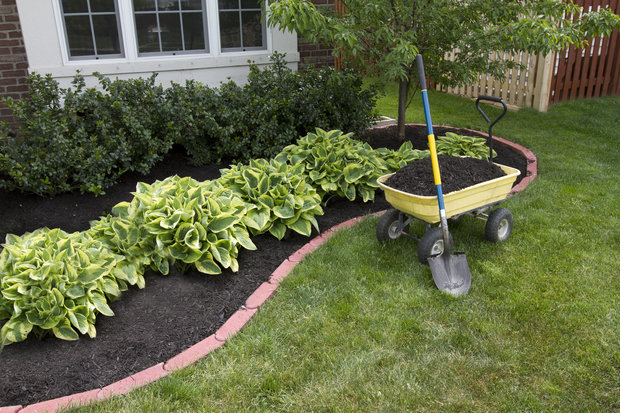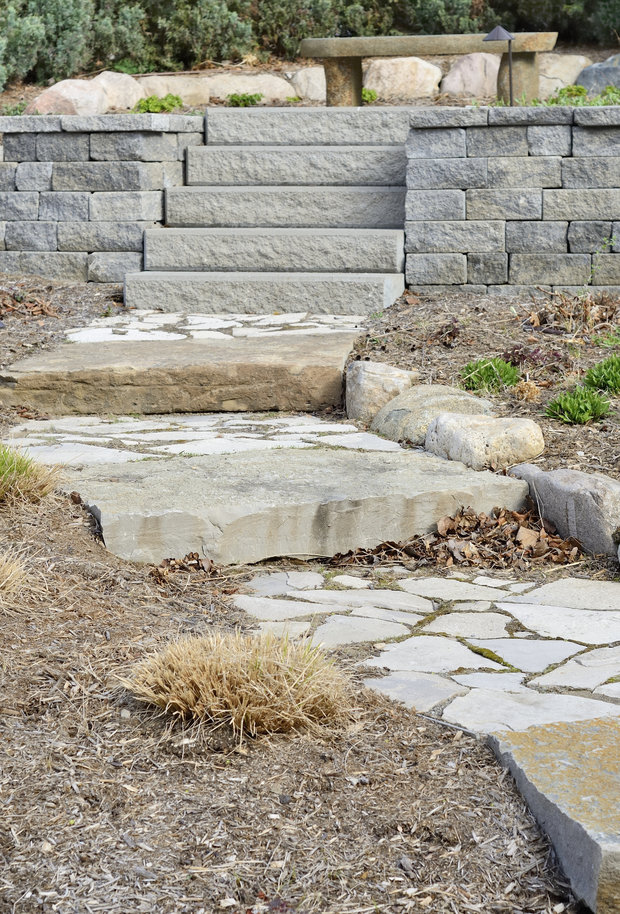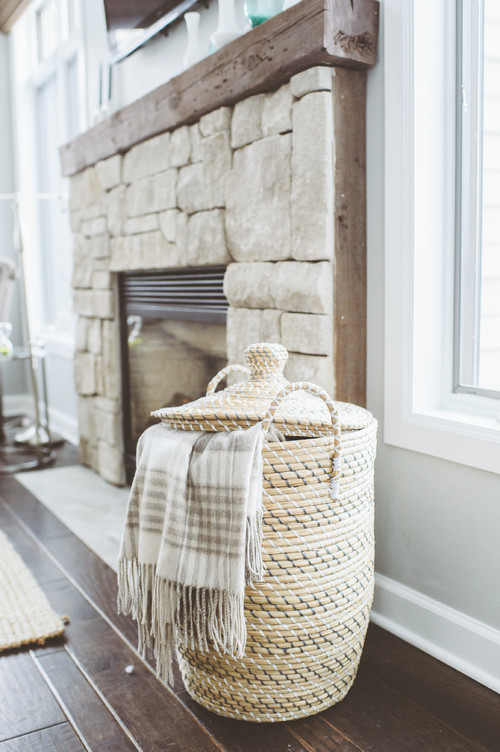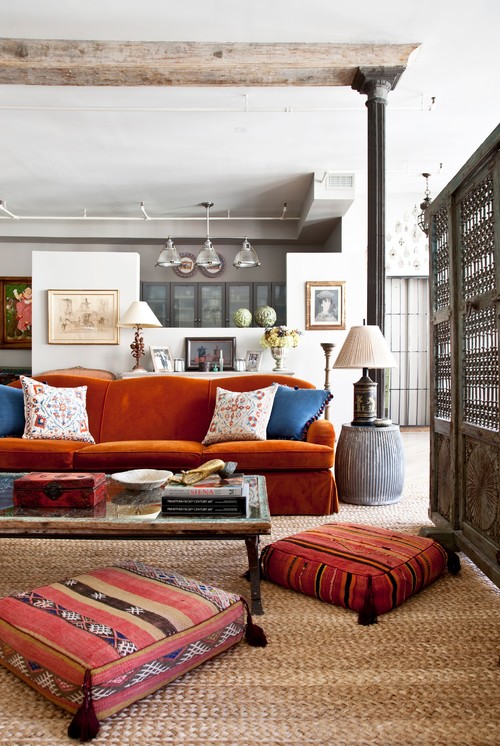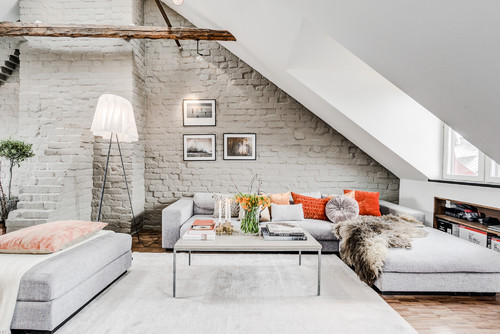Extend the life of your porch or patio by transforming your favorite summer spot into a cozy retreat that’s perfect for enjoying autumn nights outdoors.
As we welcome cooler temperatures and colorful foliage, many homeowners might be tempted to pack up the outdoor furniture for the year. Not so fast, we say. Extend the life of your porch or patio by transforming your favorite summer spot into a cozy retreat that’s perfect for enjoying autumn nights outdoors.
Keep It Cozy
When the temperatures begin to drop, consider putting away the umbrella for the season. You’ll not only invite more sunlight to your space during the day, but you’ll also clear the view for stargazing during alfresco dinner parties. To bring more warmth to the area once the sun sets, circle a few outdoor chairs around a firepit. Make sure you keep the sparks at bay by picking a fireplace with a mesh lid.
To make things even cozier, layer on comfort with outdoor pillows. Swap out summer’s tropical hues for classic fall colors. Orange, wine and dark green instantly make the space feel autumn-ready. Make sure to complement the pillows with plenty of soft throw blankets. Chunky, knit options are ideal for snuggling up on the outdoor sofa on chilly nights. If you’re entertaining a large crowd, consider bringing a sharable-sized quilt outside.
Get Creative with Lighting
As the sun starts setting earlier and earlier, it’s important to have enough light on your porch for dark nights. A simple porch light does the trick, but creative lighting is a great way to add ambiance to your space. For instance, outdoor string lights bring an enchanting look to the porch or patio. For a soft glow around the perimeter of your yard, wrap a few long strings of white lights around the trees, shrubs or fence posts. Shorter ones are a gorgeous addition to the tabletop. Simply place them over your runner with an autumn leaf garland for ambient lighting during moonlit meals.
If you need more lighting, nothing creates a more romantic glow than candlelight. To give your outdoor table a fall feel, opt for pillar candles in seasonal colors—orange, red and ivory candles in clear glass holders play up the colors of changing leaves. To diffuse the light, go for white candles in textured glass or metal hurricanes. Lanterns look lovely scattered around the porch. Fill a few with birch candles and others with fall botanicals such as pinecones and acorns.
Looking for something unexpected? Try decoratively carved pumpkins. While the quintessential smiling jack-o’-lantern works well in October, other designs can add ambiance to the porch beyond Halloween. Carve the shapes of acorns, autumn leaves or abstract patterns into gourds, and place a tea light inside of them to show off your handiwork. The fun doesn’t stop with the carving. Rather than tossing the seeds, roast them on a baking sheet and season with salt, pepper or cinnamon for a delicious treat.
Indulge in Fall Flavors
To take the bite off of chilly fall breezes, warm up with hot drinks. Hot apple cider is a fall favorite. Make your own with fresh apples from your local orchard, and simmer in a stock pot with sugar and spices. Serve in glass mugs, garnish with a cinnamon stick and add your choice of liquor if desired. If you’re short on time, simply keep bottles of hard cider and ice in a beverage tub, and provide pint glasses. For kid-friendly beverages on family night, serve hot chocolate in ceramic mugs by the firepit.
For dinner, make the most out of the grill before winter sets in. Tailgate with hot dogs and burgers for casual meals during football season. If you want a more formal dinner party, grill steak or salmon accompanied by hearty sides made with seasonal ingredients such as squash or sweet potatoes. Plate on leaf-decorated or autumn-toned dishes that coordinate with your outdoor decor.
For dessert, make things more interactive with a build-your-own caramel apple station. Provide bowls of warm caramel or chocolate for coating, with plates of chopped nuts and candy for easy rolling. If you’re hosting a bonfire, s’mores are a must. Provide skewers alongside serving bowls full of large marshmallows, and let your guests roast their own. As a twist on the classic, consider setting out cookies as an alternative to graham crackers.
With just a few changes to your porch, you can continue to entertain outdoors well into autumn. Think about inviting everyone to the backyard for a Halloween party, post-football game dinner or a weekend bonfire before winter arrives.
Angie Erickson writes inspirational content for Crate and Barrel. She shares entertaining and interior design advice on lifestyle blogs.


